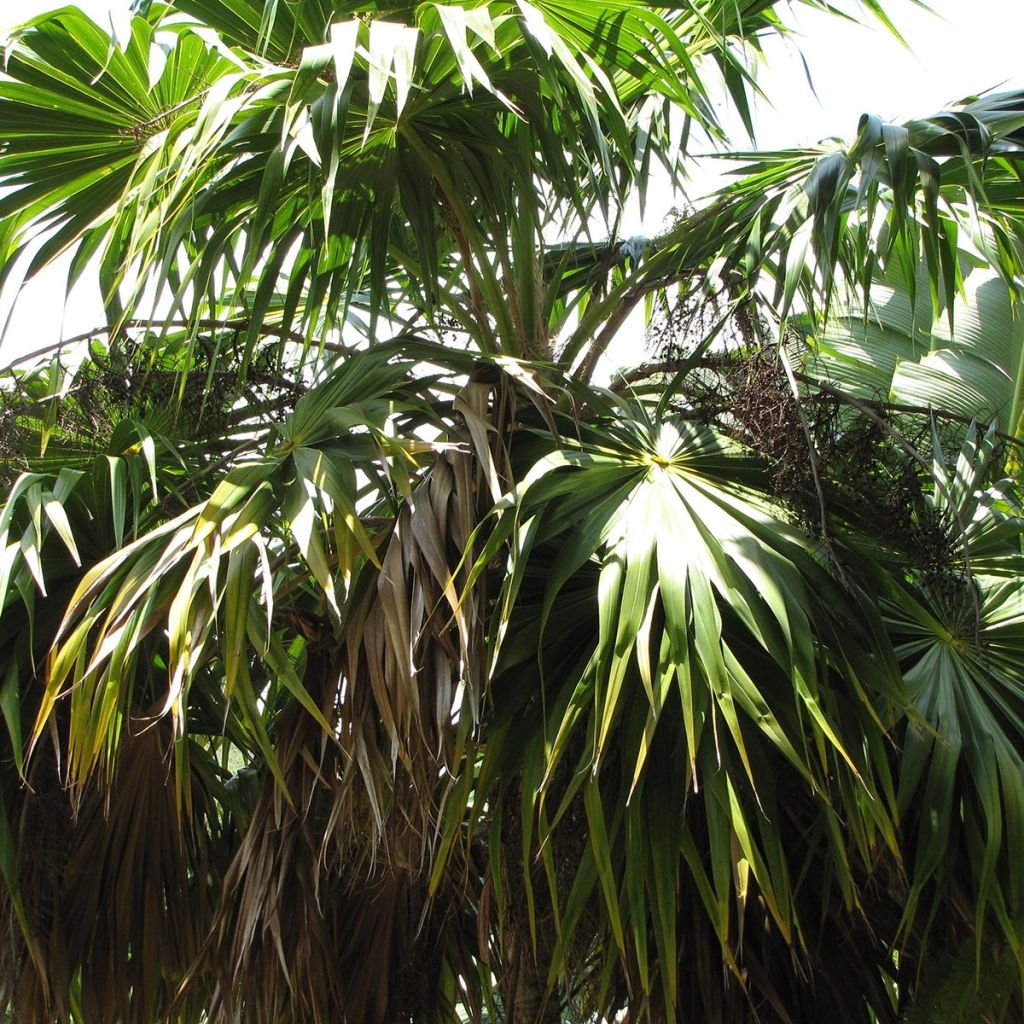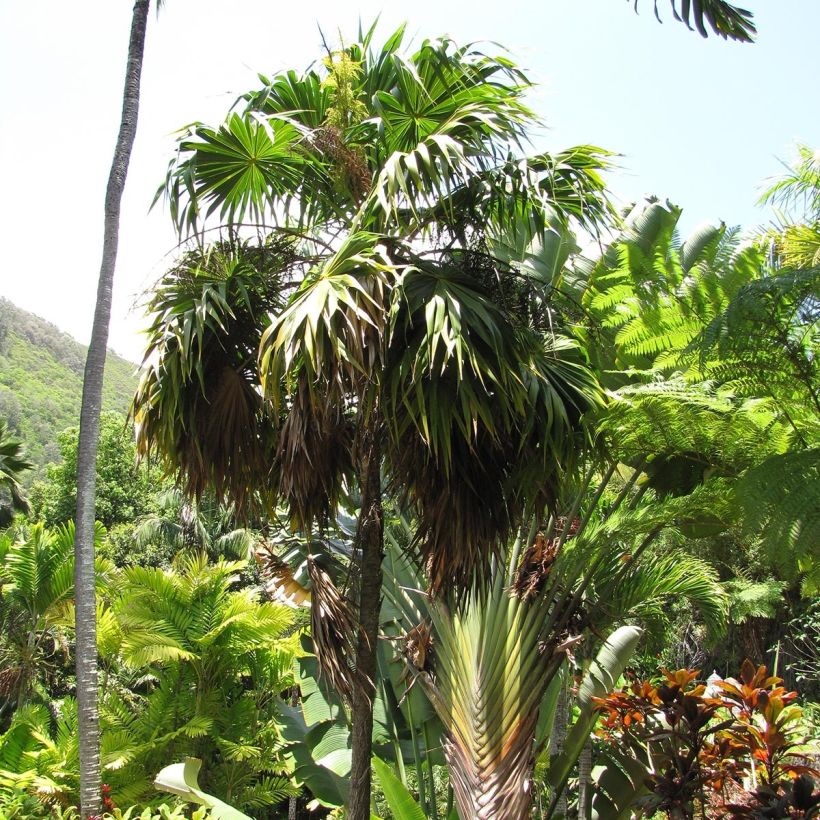

Thrinax parviflora - Palmier


Thrinax parviflora - Palmier
Thrinax parviflora - Thatch Palm
Thrinax parviflora
Thatch Palm, Jamaican Mountain Palm
Special offer!
Receive a €20 voucher for any order over €90 (excluding delivery costs, credit notes, and plastic-free options)!
1- Add your favorite plants to your cart.
2- Once you have reached €90, confirm your order (you can even choose the delivery date!).
3- As soon as your order is shipped, you will receive an email containing your voucher code, valid for 3 months (90 days).
Your voucher is unique and can only be used once, for any order with a minimum value of €20, excluding delivery costs.
Can be combined with other current offers, non-divisible and non-refundable.
This plant carries a 24 months recovery warranty
More information
We guarantee the quality of our plants for a full growing cycle, and will replace at our expense any plant that fails to recover under normal climatic and planting conditions.
Would this plant suit my garden?
Set up your Plantfit profile →
Description
The Thrinax parviflora is a rare tropical palm tree in cultivation, unique, but rather easy to grow in a frost-free container. This very beautiful species is characterized by a thin and smooth trunk topped with a beautiful crown of small fan-shaped leaves cut into segments of a very bright green, curiously twisted and curled. It thrives in ordinary but well-drained soil, even limestone, but cannot tolerate frost. This robust palm tree is a very beautiful conservatory plant.
The Thrinax parviflora belongs to the family of arécacées. It is an endemic palm tree to the Blue Mountains of Jamaica, up to 900 meters (2953 feet) above sea level, under a tropical climate that experiences pronounced wet and dry seasons. In its native lands, the annual rainfall varies between 1000 and 2500 mm (39 and 98in).
This palm tree, which can reach about 13 m (43ft) in height in nature, will remain much more compact in a pot. Over time, it develops a rather thin, straight, solitary false trunk (stipe), sometimes reaching 15 cm (6in) in diameter. The base of the stipe is covered with remnants of old petioles and dried leaves. The foliage is arranged in a semi-open crown, and it can eventually reach a span of 4 m (13ft). This crown is composed of palmate leaves arranged in a staggered manner, 40 to 70 cm (16 to 28in) wide, circular, with variable appearance, divided into 37 to 57 rigid and leathery segments, quite wide, with twisted and curled tips. The petiole measures 50 cm (20in) to 1.42 m (5ft) long.
The Thrinax are hermaphroditic, meaning that the same individual carries male and female flowers. Flowering occurs on mature individuals. It takes the form of erect to arched inflorescences, measuring 40 cm (16in) to 1.75 m (6ft) long, filled with small ivory to yellowish, fragrant flowers. The fruits turn white and smooth or slightly punctate at ripeness. They measure 6.4 to 7.3 mm (<1in) in diameter.
The Thrinax parviflora will be grown in a large container throughout Europe, which will be stored in the conservatory during winter or even in a large, well-lit and minimally heated room. Placed near an entrance or on either side of a gate, planted in isolation near a swimming pool, or installed on a terrace, it will be superb. Fans of graphic plants can place other exotic plants next to it, such as the Siberian Nolina, the Ovatifolia Agave, the Dasylirion wheeleri, the Yucca rigida, or the Yuccoïdes Beshorneria.
Report an error about the product description
Thrinax parviflora - Thatch Palm in pictures


Plant habit
Flowering
Foliage
Botanical data
Thrinax
parviflora
Arecaceae
Thatch Palm, Jamaican Mountain Palm
Central America
Planting and care
This palm tree is grown in a container. Choose a large container (40 litres) with holes at the bottom. Create a layer of clay balls, gravel or pottery shards at the bottom to improve drainage. Use a mixture of garden soil (even limestone), compost and sand. Add some blood and horn-based fertilizer and water abundantly. Fertilize every spring. In summer, watering should be regular. Thrinax parviflora should be placed in non-burning sunlight or partial shade. It is a frost-sensitive plant.
Overwinter your palm tree in a conservatory, greenhouse or even a large, well-lit room maintained at around 10 to 15°C (50 to 59°F). Reduce watering in winter.
Planting period
Intended location
Care
This item has not been reviewed yet - be the first to leave a review about it.
Haven't found what you were looking for?
Hardiness is the lowest winter temperature a plant can endure without suffering serious damage or even dying. However, hardiness is affected by location (a sheltered area, such as a patio), protection (winter cover) and soil type (hardiness is improved by well-drained soil).

Photo Sharing Terms & Conditions
In order to encourage gardeners to interact and share their experiences, Promesse de fleurs offers various media enabling content to be uploaded onto its Site - in particular via the ‘Photo sharing’ module.
The User agrees to refrain from:
- Posting any content that is illegal, prejudicial, insulting, racist, inciteful to hatred, revisionist, contrary to public decency, that infringes on privacy or on the privacy rights of third parties, in particular the publicity rights of persons and goods, intellectual property rights, or the right to privacy.
- Submitting content on behalf of a third party;
- Impersonate the identity of a third party and/or publish any personal information about a third party;
In general, the User undertakes to refrain from any unethical behaviour.
All Content (in particular text, comments, files, images, photos, videos, creative works, etc.), which may be subject to property or intellectual property rights, image or other private rights, shall remain the property of the User, subject to the limited rights granted by the terms of the licence granted by Promesse de fleurs as stated below. Users are at liberty to publish or not to publish such Content on the Site, notably via the ‘Photo Sharing’ facility, and accept that this Content shall be made public and freely accessible, notably on the Internet.
Users further acknowledge, undertake to have ,and guarantee that they hold all necessary rights and permissions to publish such material on the Site, in particular with regard to the legislation in force pertaining to any privacy, property, intellectual property, image, or contractual rights, or rights of any other nature. By publishing such Content on the Site, Users acknowledge accepting full liability as publishers of the Content within the meaning of the law, and grant Promesse de fleurs, free of charge, an inclusive, worldwide licence for the said Content for the entire duration of its publication, including all reproduction, representation, up/downloading, displaying, performing, transmission, and storage rights.
Users also grant permission for their name to be linked to the Content and accept that this link may not always be made available.
By engaging in posting material, Users consent to their Content becoming automatically accessible on the Internet, in particular on other sites and/or blogs and/or web pages of the Promesse de fleurs site, including in particular social pages and the Promesse de fleurs catalogue.
Users may secure the removal of entrusted content free of charge by issuing a simple request via our contact form.
The flowering period indicated on our website applies to countries and regions located in USDA zone 8 (France, the United Kingdom, Ireland, the Netherlands, etc.)
It will vary according to where you live:
- In zones 9 to 10 (Italy, Spain, Greece, etc.), flowering will occur about 2 to 4 weeks earlier.
- In zones 6 to 7 (Germany, Poland, Slovenia, and lower mountainous regions), flowering will be delayed by 2 to 3 weeks.
- In zone 5 (Central Europe, Scandinavia), blooming will be delayed by 3 to 5 weeks.
In temperate climates, pruning of spring-flowering shrubs (forsythia, spireas, etc.) should be done just after flowering.
Pruning of summer-flowering shrubs (Indian Lilac, Perovskia, etc.) can be done in winter or spring.
In cold regions as well as with frost-sensitive plants, avoid pruning too early when severe frosts may still occur.
The planting period indicated on our website applies to countries and regions located in USDA zone 8 (France, United Kingdom, Ireland, Netherlands).
It will vary according to where you live:
- In Mediterranean zones (Marseille, Madrid, Milan, etc.), autumn and winter are the best planting periods.
- In continental zones (Strasbourg, Munich, Vienna, etc.), delay planting by 2 to 3 weeks in spring and bring it forward by 2 to 4 weeks in autumn.
- In mountainous regions (the Alps, Pyrenees, Carpathians, etc.), it is best to plant in late spring (May-June) or late summer (August-September).
The harvesting period indicated on our website applies to countries and regions in USDA zone 8 (France, England, Ireland, the Netherlands).
In colder areas (Scandinavia, Poland, Austria...) fruit and vegetable harvests are likely to be delayed by 3-4 weeks.
In warmer areas (Italy, Spain, Greece, etc.), harvesting will probably take place earlier, depending on weather conditions.
The sowing periods indicated on our website apply to countries and regions within USDA Zone 8 (France, UK, Ireland, Netherlands).
In colder areas (Scandinavia, Poland, Austria...), delay any outdoor sowing by 3-4 weeks, or sow under glass.
In warmer climes (Italy, Spain, Greece, etc.), bring outdoor sowing forward by a few weeks.
































